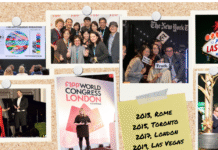
Can personalization in conjunction with hyper-localization, social media, packvertising, and customization bring revenue to news media organizations? Occasionally newspapers look at digital production of short runs for various reasons to extend their reach or to leverage their other inherent capabilities. However so this is a solution looking for a cost-beneficial case in India. Nevertheless, Amit Khurana of TechNova, one of the sponsors of the Wan-Ifra Media Summit in Delhi attempted to reintroduce digital print to the Indian news publishers gathered at the event.
Amit Khurana, chief operating officer – Newspaper Group, TechNova Imaging Systems presented a session titled, ‘The digital printing of newspapers – the possibilities and business case’ on 15 September 2022 at the Wan-Ifra Indian Printers Summit 2022 held in Delhi. Khurana attempted to contrast the newspapers of today with their mass reach, uniformity, scale, and cost over value. He said that while their main role today is as a carrier of information, the newspapers of tomorrow will be based on the ‘niche’ model, incorporating the characteristics of customization, personalization, increased consumer engagement as well as user experience – in short, they will focus on value over cost. According to him, this is where digital printing can produce several simultaneous editions and incidentally help to create potent brand campaigns.
He presented the case of the Brazilian daily Estado de São Paulo partnering with coffee company Café Pelé, to demonstrate the freshness of its coffee products. Five thousand bags of Café Pelé’s coffee were wrapped in front page facsimiles of the daily for circulation along with the newspaper. The campaign attempted to displace the notion that fresh coffee is only available in cafes.

This unique hyper localization campaign used an HP Indigo 20000 digital press to produce the coffee packaging and is claimed to have gained immense traction on social media with a reported 400% jump in coffee sales, and more than a million readers interacting with the campaign more than once. The challenge is how can Indian newspapers adopt these innovative strategies to provide higher value to advertisers and increase their spending at a time ad budgets are shrinking globally. One must nevertheless accept that there is an opportunity – since brand owners and their agencies are always keen to do some kind of dhamaka (exceptional standout campaigns). They all want to do something extraordinary to drive brand recall and even short-term action and sales.
Trends and packvertising
The Indian cases of digital printing presented by Khurana pertain to packvertising. Citing various trends including JOMO (the joys of missing out) in contrast to FOMO. He suggested that readers are going back to basics such as print (which requires undivided attention) but that personalization also works especially in the realm of packvertising.

Photo Huhtamaki
He cited research shows 50% of millennials and Gen Z’s express a clear desire for product personalization and 80% of end-users are more likely to make a purchase when a personalized product is offered in place of regular or standard items. His illustrative case in point was the 12 million unique packs for the Nestlé KitKat #LoveBreak Series produced by Huhtamaki India in a category-first innovation. Nestlé KitKat rolled out limited-edition packs called #LoveBreak to celebrate the month of February as the ‘Season of Love’ and, thus, building on the insight that every relationship is unique, so should be the way to express love.
Another case was #DettolSalutes, a nationwide campaign by India’s trusted healthcare brand Dettol after the peak of the second Coronavirus wave in June 2021 as a tribute to Covid-19 warriors. In the one-of-its-kind campaign, Dettol replaced its logo with the image of a Covid warrior, along with his or her inspiring story of battling the pandemic, on its liquid handwash packs.

Dettol’s parent company Reckitt launched a website www.DettolSalutes.com for people to share stories related to Covid protectors among them and create virtual Dettol liquid handwash packs, which could then be shared on their social media channels. The campaign’s aim was to strike an emotional chord with the customers and convey the message of human solidarity in the wake of the global crisis.
Reckitt sacrificed its brand logo space on 4 million packs to deliver the message through digital labels printed on HP Indigo presses.
The brand packaging produced using digitally printed packaging illustrates how consumer engagement, hyper-localization, and personalization can be amalgamated into a brand story to provide a unique offering to end users. The challenge is for the key account persons, brand managers, and media planners to come up with creative challenges that leverage the trust, timeliness, multichannel capabilities, and extensive assets of modern news publishers.















